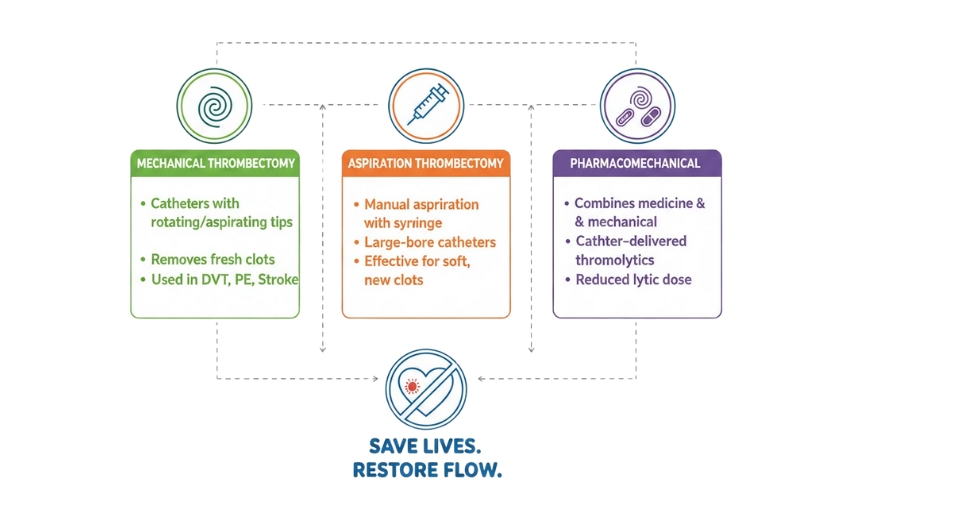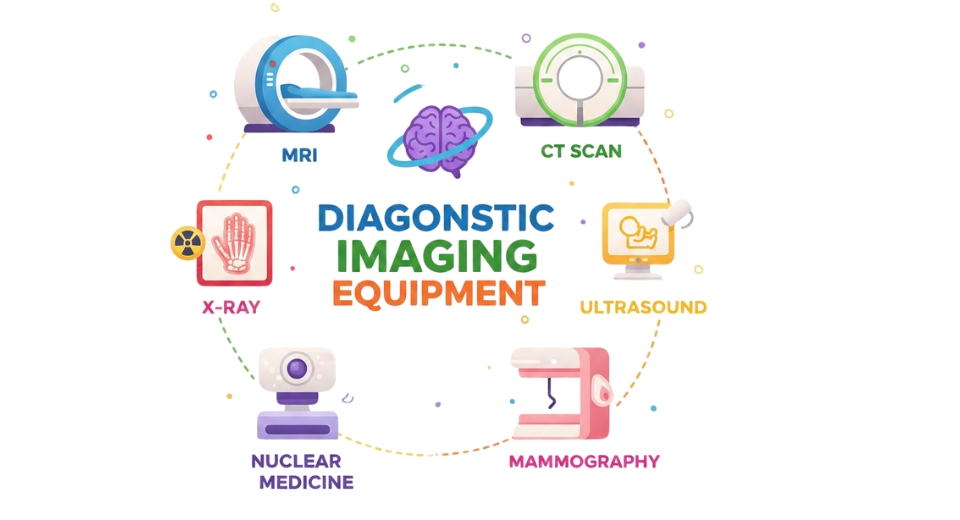MARKET OVERVIEW
The global 3d bioprinting market will be the new benchmark of advanced healthcare and regenerative medicine. This market, with progressive technology, is set to transform the future of medical research, tissue engineering, and drug development. With the help of 3D printing technology, this process enables layer by layer fabrication of biological tissues, allowing for revolutionary medical treatments and innovations.
The global 3d bioprinting market will experience further evolution of its initial applications in research and pharmaceutical sectors. More advanced technologies of bioinks, cellular materials, and advanced software will enter the market for increasing levels of accuracy for tissue modeling and drug testing. It will arrive with significant advancements in creating patient-specific treatments and designed therapies, along with intricacies in tissue structure for the implants.
The scope of the global 3d bioprinting market, from the standpoint of organ and tissue alteration printing, would be further amplified via customized medicine, biotechnology, and even cosmetics. Founded in tissue regeneration, applying it in combination with devices towards medical purposes in the creation of customized prosthetics or implants will be pushed to new levels. This would create an extremely personalized prosthetic solution that can respond to individualistic requirements, hence leading to comfort and ease not seen before.
As newer technologies emerge, the advances in function and efficiency within 3D bioprinting platforms will emerge. More sophisticated tissues, but more so, structural organs required for clinical relevance will be printed with time. For example, it will be a marvelous achievement when human organs like kidneys and livers become printable, fully viable organs. It will put an end to the extensive waiting list of individuals for transplants and reduce waiting times.
The global 3d bioprinting market will also be impacted by the changes in the regulatory environment. With bio printed tissue and organs now set to be used extensively in medicine, regulatory authorities will only simplify their rules and regulations so that such treatment does not cause any harm and is proven effective. This will instill even greater confidence in such a solution from the medical fraternity to the patient's hands. An effective model for bio printed health solutions will be developed in collaboration with providers, research institutions, and regulators.
This would guarantee that the workers were capable of creating, running, and enhancing bioprinting technologies. Further, this collaboration between the private firms and the universities would foster an environment where concepts are converted into sellable solutions with speed. In terms of the potential of the global 3d bioprinting market in the future, there are potential areas of use that extend beyond healthcare to food production and even conservation of the environment. Combined with sustainable methods, 3D bioprinting can become a step towards minimizing waste and introducing alternative protein sources to markets.
With these as its potential avenues, impacts will most likely stretch out from its initial boundaries while revolutionizing industries worldwide. The Global 3D Bioprinting industry and market are going to witness fairly immense growth. With each advance step in the bioprinting technology, its area of application will increase, thus stepping into healthcare, research, and even environmental fields. The things that are happening in this market will surely revolutionize industries in the days to come by opening through 3D bioprinting the doors to things that can answer some of the globe's biggest medical and environmental questions.
Global 3d bioprinting market is estimated to reach $3,051.78 Million by 2032; growing at a CAGR of 12.7% from 2025 to 2032.

GROWTH FACTORS
The global 3d bioprinting market is a rapidly developing technology sector that holds the ability to create numerous possibilities in manufacturing, research, and health care. It is the process of creating biological structures with 3D printing technology, and it has created space for the medical community to experience revolutions in drug testing and organ regeneration. The sector has undergone numerous factors to stimulate growth and challenges transforming opportunities into the direction of the future of the field.
Another key driver of the market is increasing demand for tissue engineering and organ transplants. Since there is a huge shortage of organ donors and recipients, 3D bioprinting holds hope to fulfill this gap by creating artificial tissues and organs. Apart from this, the technology is advantageous to pharmaceutical research in the sense that the drugs can be tested on the tissues bioprinted, which reduces the amount of animal experimentation needed and accelerates drug development processes. Furthermore, as technologies advance, such as the addition of stem cells and biomaterials, has facilitated the expansion in applications of 3D bioprinting, which contributes to its improvement.
Research and development investment is a massive growth driver in this market. Governments, private organizations, and universities are investing substantial amounts into this technology because it has the capability of resolving some of the most burning issues facing the healthcare industry. The third factor driving this innovation is collaboration among major players within the market to drive innovation; impossible breakthroughs are now made a possibility.
Yes, it has some market barriers. The price that the materials and high technology place on the bioprinting processes is not viable. The regulatory issues involved in the utilization of the human cells and tissues also place considerable hurdles to be overcome by the bioprinting technology. These factors have the potential to push back the incorporation into the healthcare mainstream.
Lower-cost material sciences and printing technologies are likely to improve much better in the future with the emergence of new techniques; this enhances the scalability of bioprinting-related applications. Greater improvement in regulatory clarity will stimulate more investment and collaboration effort in the future. Some emerging economies will also boost growth in the coming years, primarily because of their adoption of these technologies toward their rising health care needs in the near future. This domain is about to reshape medical practice in the next few years. Outside the domain of healthcare, sectors such as cosmetics and food manufacturing will see opportunity.
MARKET SEGMENTATION
By Component
The global 3d bioprinting market has attracted a lot of attention in recent years, mainly due to the fact that it has the capability of transforming the scenario of various industries, such as healthcare and biotechnology. This technology creates intricate structures made of living cells, biomaterials, and other components through the application of 3D printing. Technology innovation and increasing demand for personalized medicine, tissue engineering, and drug screening are anticipated to create major growth in this market. The market can be divided into various segments like 3D bioprinters, bio-inks, software, and consumables. Each one of them has an important role to contribute to the development and implementation of 3D bioprinting technologies.
These will allow for the precise layer-by-layer deposition of cells and biomaterials in creating bespoke tissues and organs. With time, the printers will also develop to have an improved resolution, increased speed in printing, and high biological material compatibility. With the advancement of the technology, the price for 3D bioprinting will decline substantially. Therefore, it will be within reach of the conducting institutions, health centers, and even small companies, that are involved in the field of biotechnology.
There are other market features which are also based on the bio-inks. They are regarded as materials to be utilized when printing cells and structures. Bio-inks are made in such a manner that they resemble human tissues and organs, so one can use them in areas concerning tissue regeneration and disease modeling. In the coming days, the demand for such bio-inks is to be increased as there have been more advanced developments needed in order to sustain cellular growth and tissue formation. These materials must be biocompatible with a variety of types of cells, including stem cells, for the proper functioning in generating functional biological constructs.
The software that is related to the 3D bioprinting process plays a major role in design, simulation, and control of bioprinting operations. As technology continues to evolve, software will become even more intuitive and advanced while giving users far more control over the actual printing process to generate far more complex but highly accurate structures.
All this will result in staggering acceleration of the application of 3D bioprinting, not just in fields such as regenerative medicine and individual health care, but also where abilities for development of tailored biological structures will have utmost significance. The second group, which will rise, is comprised of consumables. When the demand for the actual bioprinting starts off by increasing the process so that it is reliable and also becomes more efficient, there will always be the use of consumables like scaffolds and growth factors and biological agents to continue taking it high up. Various consumables to accommodate a researcher's array of application in testing drug, or even printing entire organs. Ultimately, the global 3d bioprinting market will grow significantly due to increased innovation in bioprinter technology, bio-inks, software, and consumables. All of these markets will grow and become increasingly significant in facilitating advancements beyond the scope in the medical and biotech sectors.
By Material
The global 3d bioprinting market is growing increasingly as more sectors start exploring this new technology. The 3D bioprinting process involves unique printers that produce three-dimensional objects.
Such structures are commonly prepared from living cells, hydrogels, and extracellular matrices, which are significant in the production of functional tissues and organs within medicine but also have applications in other sectors, such as pharmaceuticals and cosmetics.
As technology advances, the demand for quality and reliable products of 3D bioprinting will increase, and it would have effects on a number of industries. In looking at materials used for 3D bioprinting, one can see that it may be segmented into groups. Living cells are a fundamental material in this arena. The incorporation of living cells has allowed manufacturers and researchers to develop complex, biologically representative models of tissues and organs. This is the most important factor in medical science studies because scientists are headed in the direction of developing personalized treatments and even organ printing.
The growth of technology will therefore lead to an increase in the use of living cells in bioprinting and therefore the foundation of medicine innovations in the future. Hydrogels also contribute immensely in the global 3d bioprinting market. Water-based materials help in building a supportive framework for cells and tissues to live and communicate. Hydrogels may be engineered to provide the properties of natural tissues, thus making them relevant in scaffolding tissue-engineering. As research continues, hydrogels will be even more advanced, with better property in cell growth, as well as intricate tissue frameworks. Another critical material in the industry is extracellular matrices, which are the native scaffolds of the body that sustain cells and tissues. Extracellular matrices are employed in creating environments that resemble the real tissues in 3D bioprinting for cell expansion and tissue formation. Through ongoing research, ECMs will be increasingly significant in the development of functioning, life-like tissues for medical procedures. Other materials in the global 3d bioprinting market comprise other natural and synthetic materials that facilitate the development of particular structures. These materials, though they may be less utilized in living cells, hydrogels, or ECMs, are extremely vital in particular bioprinting procedures.
By Technology
The global 3d bioprinting market is growing fast and expanding with remarkable technological developments shaping its future. Industries require new solutions to tackle health care and manufacturing issues. Therefore, 3D bioprinting becomes a hopeful sector for them. While various technologies are acting as the major drivers of market development, which already reflects remarkable potential, the market will go on developing in the future.
The technology for 3D bioprinting is varied, and numerous approaches are investigated to enhance precision and efficiency when printing intricate biological structures. One of the most important technologies in this market is Magnetic Levitation. This technology applies magnetic fields to move and place cells or materials while printing. With the use of high precise, delicate structures, very detailed biological prints become an advantage with Magnetic Levitation.
With continuing development of this technology, better results can be anticipated and seen, particularly in areas like tissue engineering or printing of organs. Another giant in the global 3d bioprinting market is inkjet-based bioprinting. In this process, by a highly regulated way droplets of bioink fall on the substrate. Inkjet bioprinting has been preferred due to its accuracy and high speed, suitable for producing functional tissue and organs. As the technology has advanced, inkjet printers are likely to produce increasingly larger and complex biological structures, paving new ways in medical research and personalized medicine. Most widely used technique is the syringe-based bioprinting technique wherein bioinks are extruded from a syringe, layer by layer, building 3D structures. The syringe-based bioprinting technique would be said to be more versatile than others in its ability to print several types of different tissues. Some of the future directions for syringe-based bioprinting would include ensuring the consistency of the printed structure as well as enhancing new types of bioinks that will more closely match properties of human tissue.
Other such technologies that will continue to remain significant players in the global 3d bioprinting market include laser-based bioprinting, whereby laser energy is employed for accurate control over the deposition of bioinks. In this technique, accuracy and high resolution play crucial roles in developing detailed, highly functional tissues. As the technology improves, it is possible that the technique might be used in other areas, i.e., in drug development and in regenerative medicine. Other emerging technologies also contribute to this extended growth within the global 3d bioprinting market. These are other methods of generating these biological constructs that might even create an entirely new dimension, offering more capability toward what is now limited in what is possible to build and thus ease the problem being presented to the health care industry.
The technology of bioprinting will face revolutionary transformations in areas related to medical treatment, tissue regeneration, and even transplantation of organs. With growing industry, the integration of such sophisticated technologies will revolutionize how we tackle the healthcare and medical research domain.
By End User
The 3D bioprinting market globally is an intriguing, fast-growing area and is rich with promise for the future. Utilizing 3D printing for the creation of biological tissues and organs is enabling gigantic advances in healthcare, research, and biotechnology.
This capability can indeed revolutionize industries, thus implementing new methods of drug development, treatment of medicine, and even organ transplantation. They have more end-users from other influences than ever before, including academia and research institutes, pharmaceutical and biotechnology companies, and hospitals. It is through research and academic institutes that expansion of the global market for 3D bioprinting is discovered. Research and academic institutes assist in research and development, furthering 3D bioprinting technology beyond what can be achieved. While scientists and researchers continue to make new discoveries and techniques, academic institutes will be at the forefront of innovation in this area. These advances, as well as new bioprinting and new materials technologies, will also have their contributions to making the next generations of specialists ready.
Research and academic institutions will also engage increasingly with other industries in prolonging further the functions of 3D bioprinting in the coming years. A pharmaceutical and biotech firms are the other major players in the global 3D bioprinting industry. They are applying bioprinting to develop more accurate and effective models for testing drugs, which will reduce the use of animal tests and thus accelerate the process of developing drugs. Pharmaceutical industries will thus be capable of conducting tests on how new drugs affect various patients in a more descriptive and economical way when utilizing 3D printed tissues. The technology, thus, is most likely to enhance personalized medicine by helping it become simpler to create patient-specific forms of drug treatments.
Pharmaceutical and biotechnology firms in the future are most likely to keep investing very significantly into 3D bioprinting technology that puts more innovative and targeted solutions to the market. Hospitals are also adopting 3D bioprinting into their practice. This presents a broad array of possible benefits. Perhaps the most intriguing possibility is the potential to create patient-specific prosthetics and implants. With advances in the technology, the chances of the hospitals employing 3D bioprinting for transplantation of organs and tissues are significant. This could thus reduce waiting transplant lists and agony by significant amounts.
The medical sector is highly likely to be 3D-printing-enabled in the future when more and more hospitals would be employing bioprinting technology as the standard in healthcare and would be providing patient-centered care. The international 3D bioprinting market will keep growing and developing, powered by the dominant players such as pharmaceutical and biotechnology firms, hospitals, and academic institutions. With advancing technology, it will open new avenues for drug development, research, and medical treatments, which will transform the future of healthcare and biotechnology in deep ways.
|
Forecast Period |
2025-2032 |
|
Market Size in 2025 |
$1,369.76 million |
|
Market Size by 2032 |
$3,051.78 Million |
|
Growth Rate from 2025 to 2032 |
12.7% |
|
Base Year |
2022 |
|
Regions Covered |
North America, Europe, Asia-Pacific Green, South America, Middle East & Africa |
REGIONAL ANALYSIS
It has demonstrated phenomenal growth in the global 3d bioprinting market, driven by various reasons across different geographies. The technology is moving forward and expanding its applications and reach globally, hence making it essential to analyze it region wise to achieve the right impact.
In North America, the United States, Canada, and Mexico are leading in terms of research and development in bioprinting. The U.S. is spearheading the technological growth with a plethora of biotech firms and research centers pouring money into the industry. Government support towards the development of healthcare and biotechnology innovation is also promoting development in the sector. Canada and Mexico, while not as robust as the U.S., are gradually but steadily rising to the challenge, with partnerships with international players and an upsurge in interest in healthcare innovations.
Europe is also home to numerous biotech centers, thus making it an important contributor in the 3D bioprinting sector.
The UK, Germany, France, and Italy are all notable due to their established health facilities and good research institutions. They already have 3D bioprinting in place for use in drug discovery and printing of organs, demonstrating a keen interest in advancing the field. Other nations in Europe are also following the trend and are investing in the research and development of this technology to advance health solutions in the continent.
Asian-Pacific nations like China, Japan, India, and South Korea are on an increasing trend of bioprinting activities.
The technological foundation base in China and Japan is highly developed, and therefore there are good research developments as well as its commercial application in bioprinting.
India is emerging as an important player, particularly given the growing number of medical research institutes and bioprinting technology startups. South Korea, which emphasizes innovation in healthcare technology, is also rapidly increasing its role in this market, becoming a leader in producing medical devices and regenerative medicine. South America is a relatively small market but is growing in the field of 3D bioprinting. Brazil and Argentina are the main countries investing in bioprinting technology. These countries are focusing on developing their research capabilities and have collaborated with global organizations to bring innovation to the healthcare sector.
As the market matures, it is expected that more South American countries will explore 3D bioprinting applications to address regional healthcare challenges. This market can begin to be tapped through heavy investment in cutting-edge technologies such as bioprinting, initially in Saudi Arabia and UAE, followed by others. Other nations in Africa such as South Africa are collaborating with other global organizations in this health-related infrastructure to achieve its utilization through the help of 3D bioprinting. Additional growth of sector's scale can most probably come from Middle East and Africa.
In the future, the international 3D bioprinting market is likely to be in a sustained growth trajectory with regional companies more and more shaping its growth.

COMPETITIVE PLAYERS
The global 3d bioprinting market is growing at a very fast pace. Major players are leading the trends of such developments in this market. With the development of technology, they are making breakthroughs in many fields like healthcare, tissue engineering, and drug discovery. Organovo Holdings, Inc., CELLINK AB, and EnvisionTEC GmbH are some of the prominent names involved in this business and are adding immensely to the commercialization of 3D bioprinting. All these firms are attempting to stretch the limits of what is possible currently. Some attempt to develop fully functional organs and tissues and others attempt to accelerate and refine the bioprinting methods in precision.
As an example, Organovo Holdings stands out due to its attempts at developing human tissues, which can be utilized for drug testing for the purpose of entirely avoiding animal testing.
This would greatly enhance drug development and testing by pharmaceutical firms. CELLINK AB, however, is a market leader in bioprinting materials, with a range of bioinks required to create living tissues. The top 3D printing solutions company, EnvisionTEC GmbH, has been able to innovate and extend further boundaries in medical and dental fields by creating highly precise and personalized medical devices through 3D bioprinting. Some other large players such as 3D Systems, Inc., and Allevi Inc. are fueling this growth by attempting to make 3D bioprinting affordable and accessible. Such companies offer easy-to-use bioprinting platforms designed to enable researchers and institutions to develop intricate biological structures. At the same time, Regemat 3D S.L. and Merck KGaA are working on sophisticated bioprinting solutions for regenerative medicine, allowing tissues to be printed that can be applied in transplants or treatments of different diseases.
Firms such as Cyfuse Biomedical K.K. and Sunp Biotech are pushing the technology even further in terms of specialized solutions that will be able to produce extremely complex and functional tissues. Firms such as RegenHU Ltd. and Voxcell Bioinnovation Inc., however, concentrate their innovations on streamlining the entire process so as to achieve greater precision and efficiency. Poietis, Advanced Solutions Life Sciences, and GeSiM are moving the technology forward, bioinking and making bespoke bioprinting solutions for clinical use. The market for 3D bioprinting globally is poised to rise in competition in the near future.
With the likes of Inventia Life Science Pty Ltd, UPM, and CollPlant Biotechnologies Ltd., among others, within this market, much innovation is likely to be gained by this market. This market will expand exponentially with innovations created by researchers and organizations, which will change the face of healthcare, enable it to develop personalized treatments, and even print out an organ. These gamers will have a huge impact on future medicine with growing 3D bioprinting demand.
3D Bioprinting Market Key Segments:
By Component
- 3D Bioprinters
- Bio-inks
- Software
- Consumables
By Material
- Living Cells
- Hydrogels
- Extracellular Matrices
- Other Materials
By Technology
- Magnetic Levitation
- Inkjet-based
- Syringe-based
- Laser-based
- Others
By End User
- Academic & Research Institutes
- Pharmaceutical & Biotechnology Companies
- Hospitals
Key Global 3D Bioprinting Industry Players
- Organovo Holdings, Inc.
- CELLINK AB
- EnvisionTEC GmbH
- 3D Systems, Inc.
- Allevi Inc.
- Regemat 3D S.L.
- Merck KGaA
- Cyfuse Biomedical K.K.
- Sunp Biotech
- RegenHU Ltd.
- Voxcell Bioinnovation Inc.
- Poietis
- Advanced Solutions Life Sciences
- GeSiM (Gesellschaft für Silizium-Mikrosysteme mbH)
- Inventia Life Science Pty Ltd
- UPM
- CollPlant Biotechnologies Ltd.
- Tissuelabs
WHAT REPORT PROVIDES
- Full in-depth analysis of the parent Industry
- Important changes in market and its dynamics
- Segmentation details of the market
- Former, on-going, and projected market analysis in terms of volume and value
- Assessment of niche industry developments
- Market share analysis
- Key strategies of major players
- Emerging segments and regional growth potential








 US: +1 3023308252
US: +1 3023308252






